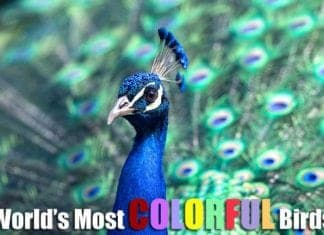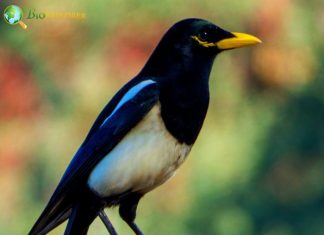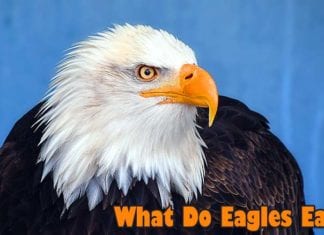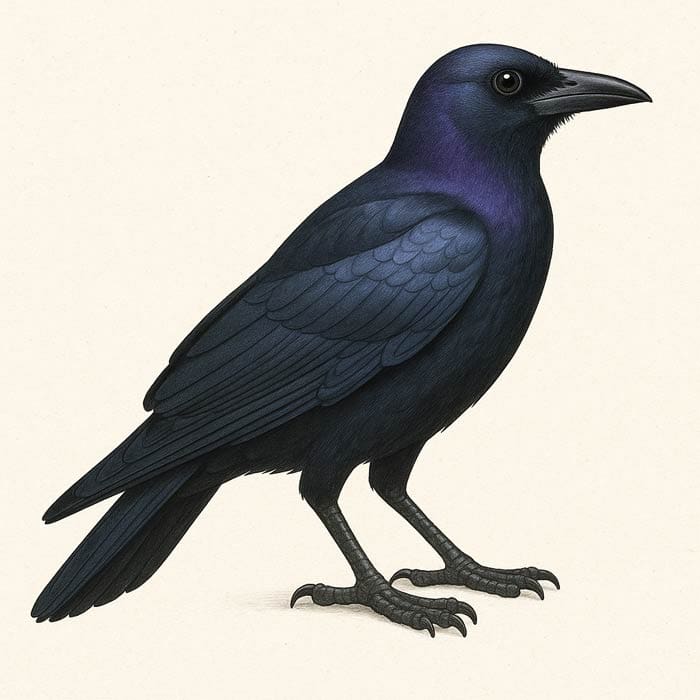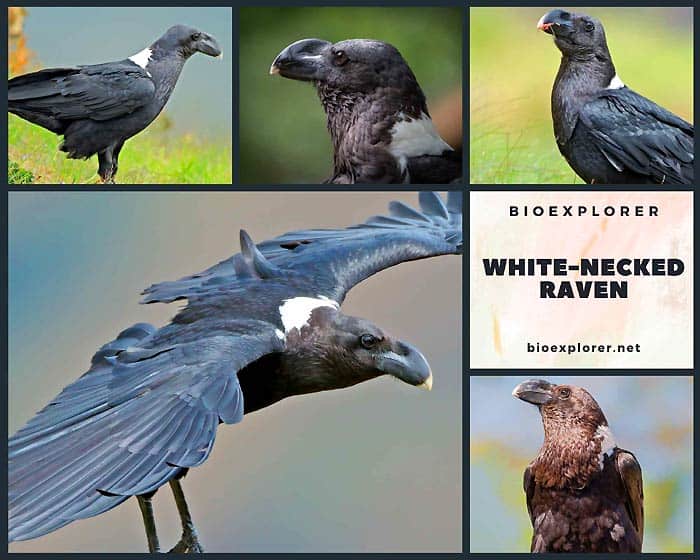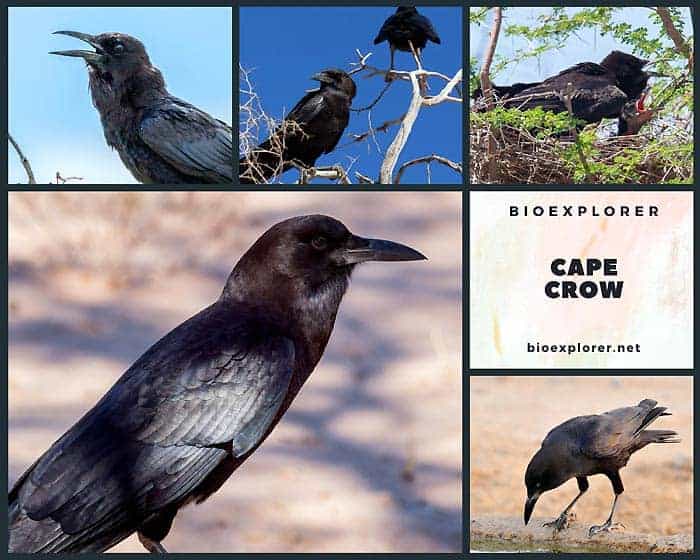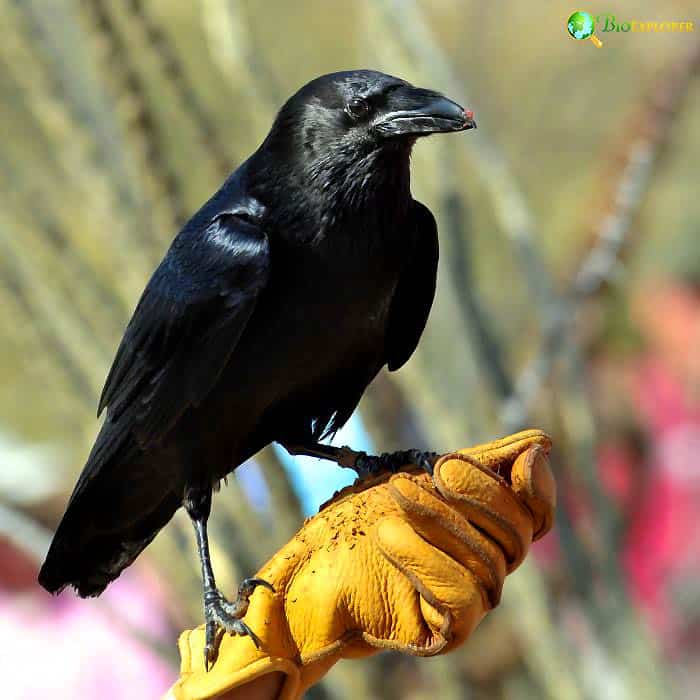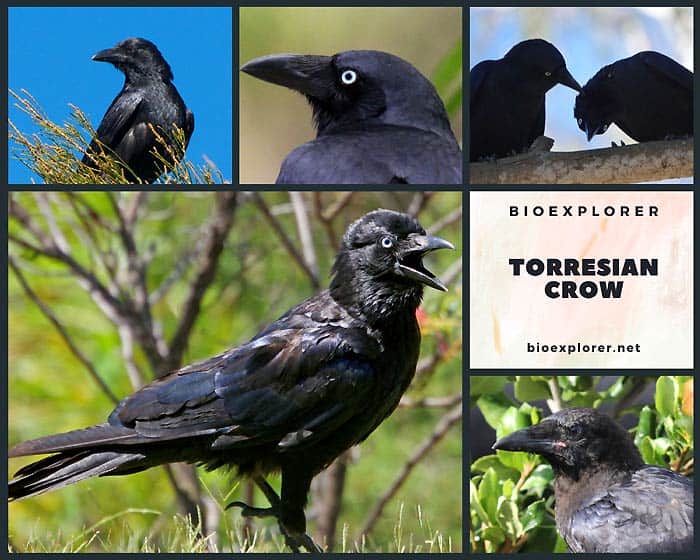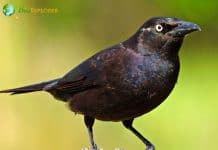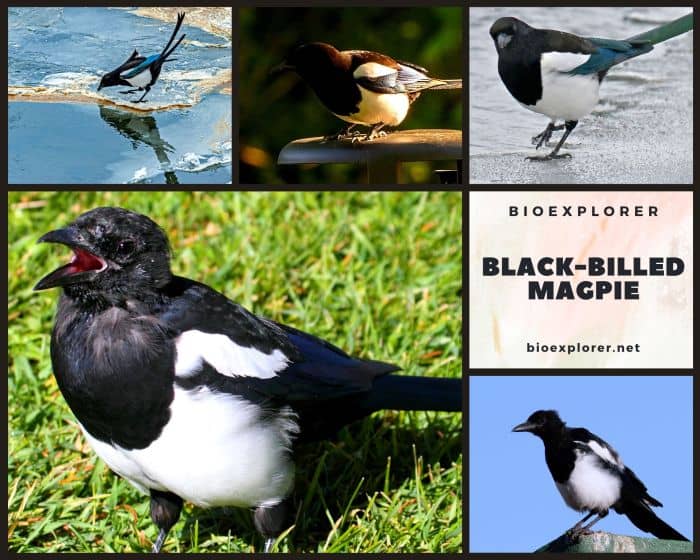
| Animalia | Aves | Passeriformes | Corvidae | Chordata | Pica hudsonia |
Black-billed Magpies (Pica hudsonia), with their flashy appearance and large bushel-basket nests in trees, significantly enhance western landscapes. Farmers and ranchers tried to eradicate this species in the past. Still, their efforts were unsuccessful, and today they can be found in open areas and even some mountain west towns.
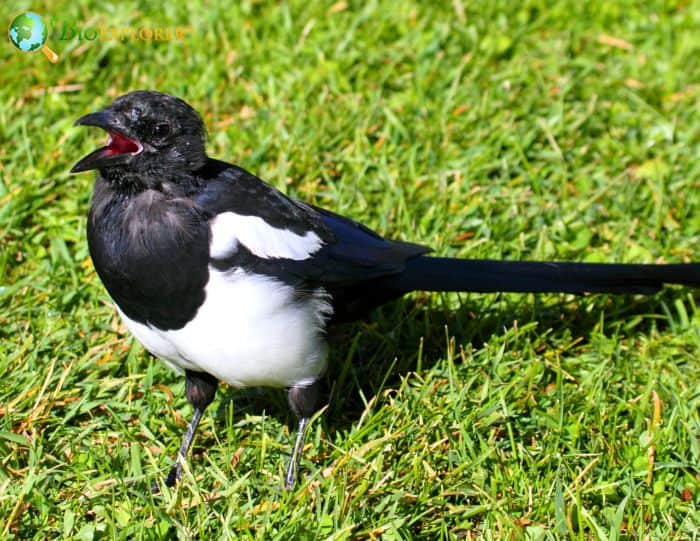
Black-billed Magpie Physical Characteristics
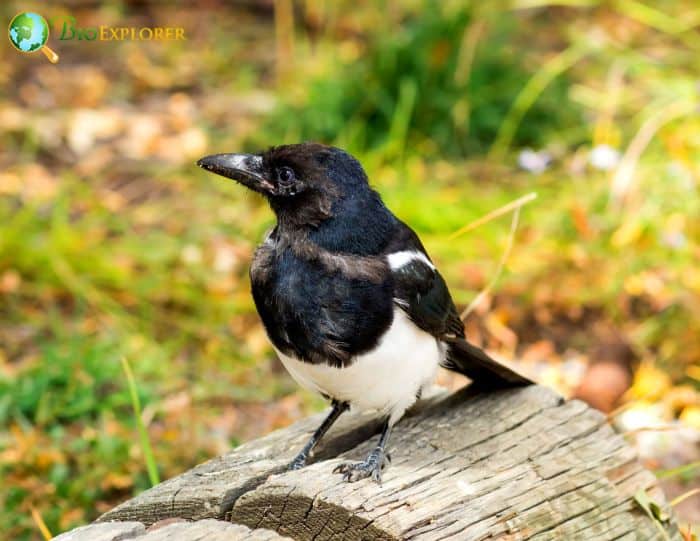
In some species, colors are based on the structure of the feathers (structural colors), as opposed to most species where plumage colors are determined by the presence, absence, and relative concentration of melanin in the feathers.
- Some species produce a different structural color when UV light is reflected back.
- Some birds can see ultraviolet light, so their colors are quite different from what one perceives. But the majority of a bird’s structural colors are iridescent.
- Iridescence results from diffraction, splitting light into its individual colors by the microscopic feather structure of some birds.
- However, specific light angles must illuminate the bird to see the iridescence.
- One highly iridescent bird, the Black-billed Magpie, whose brilliant colors are only visible when the light hits them at the right angle.
Suggested Reading:
36 Most Colorful Birds In The World!
Notable Behavior of Black-billed Magpie
Black-billed Magpies fly in long, sweeping arcs, flashing their white wing patches and long, trailing tails.
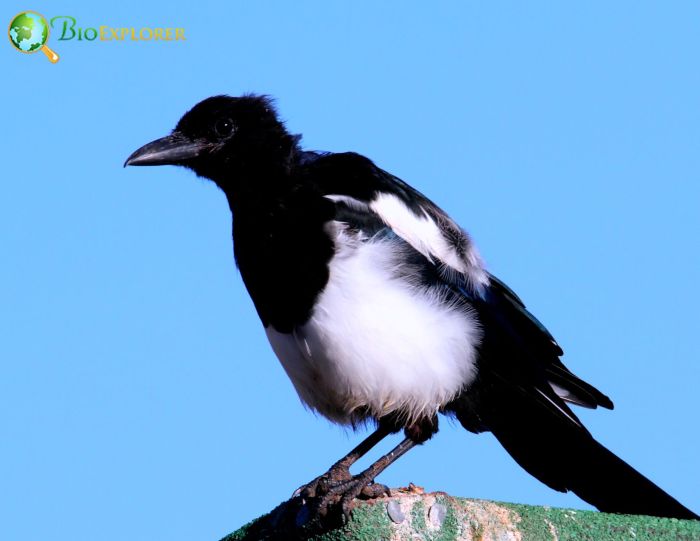
- The equivalent of other bird species’ songs, they perch at the tops of trees to visually mark their territory.
- Magpies have a strutting gait when they walk. They will occasionally form flocks, even appear to live together and come together to attack raptors.
- Group males assert dominance by stretching their white eyelids and raising their bills.
- Additionally, they exhibit aggression by flickering or quivering their wings to display the white patches on them and by spreading, quivering, or flicking their long tail feathers.
- These black birds spread their tails in an expression during courtship. Black-billed Magpies have lifelong partners.
- By pleading with the male for food, the female starts the relationship between the two, which leads to courtship feeding. The male guards the female during breeding to prevent her from mating with another male, which does happen.
- One of the most unusual behaviors of Black-billed Magpies is the so-called “funeral[1] ” in which a magpie finds a dead one and starts calling loudly to draw attention from other magpies.
- Before dispersing and flying off silently, the group of raucously cawing magpies (up to 40 birds have been seen) may gather for 10 to 15 minutes.
Suggested Reading:
Yellow-billed Magpie
Species Name: Pica nutalliMagpie’s Nesting Ability
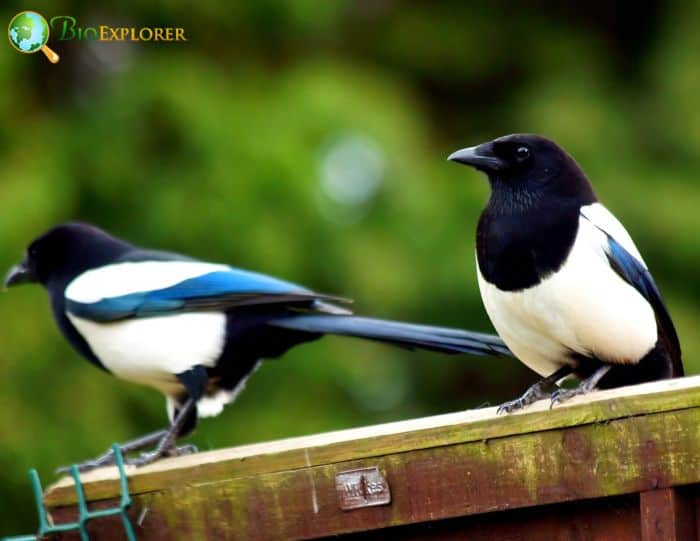
Black-billed Magpie pairs work together to construct their dome-shaped nests, which can range from about 30 inches high to 20 inches wide but are typically that size. The male collects logs for the house’s exterior[2]. To care for the interior, the female forms a mud cup and lines it with grass.
Mirror Self-recognition In Magpie Birds
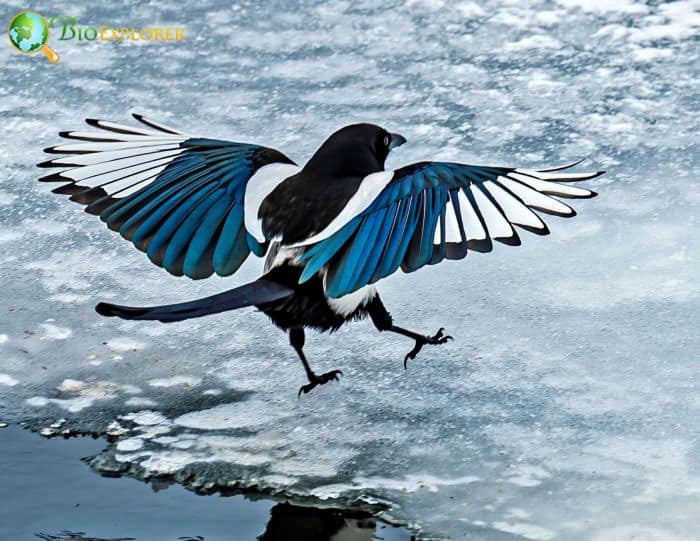
Magpies, a species with a brain structure very dissimilar from mammals, have been shown by psychologist Helmut Prior and colleagues to exhibit signs of self-recognition.
- The magpies were put through a mark test, which involves applying a mark to a subject’s body so that it can only be seen in a mirror.
- The researchers concluded that the magpies recognized the image in the mirror as themselves and not another animal because they noticed the bird was scratched at the mark.
- These results show that non-mammalian species can exhibit self-recognition behaviors[3] and that self-recognition can exist in species devoid of a neocortex.
Magpies can locate a food source using their sense of olfaction
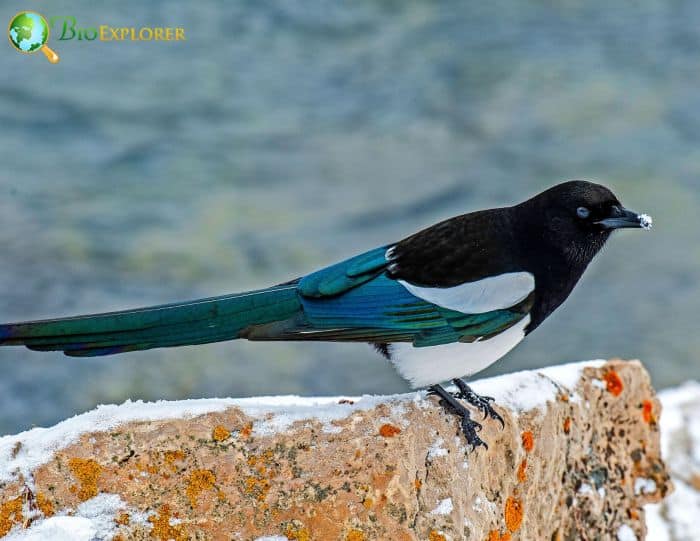
The Black-billed Corvidae family includes intelligent ravens, crows, jays, and magpies.
- The ability of magpies to mimic human and other animal sounds has been reported.
- Magpies never go hungry and consume almost anything, including carrion, nestlings, small mammals, insects, and anything left unattended on a picnic table.
- A very uncommon ability in birds, they can use their sense of smell to find a food source.
- Magpies are slow flyers[4], so they avoid becoming a food source by darting in and out of dense branches.
Magpie Predatory Adaptation
To defend against great horned owl predation, black-billed magpies may roost in dense thickets and coniferous trees.
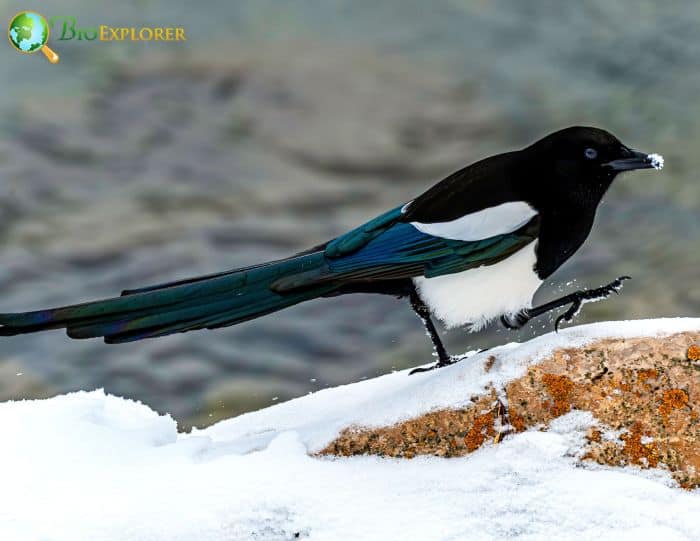
- The dome over the nest may serve as protection from Common Ravens and great horned owls.
- Adult and juvenile bird flocks work together to mob predators. The predator frequently gives up the hunt due to this group’s behavior.
- Different mobbing behaviors are displayed by black-billed magpies in response to the predators that are most likely to attack at that stage.
- Mobbing may be an efficient teaching tool to show young animals which are more dangerous, require a longer, more ferocious alarm call, and act as a defense mechanism.
What Eats Black-billed Magpies?
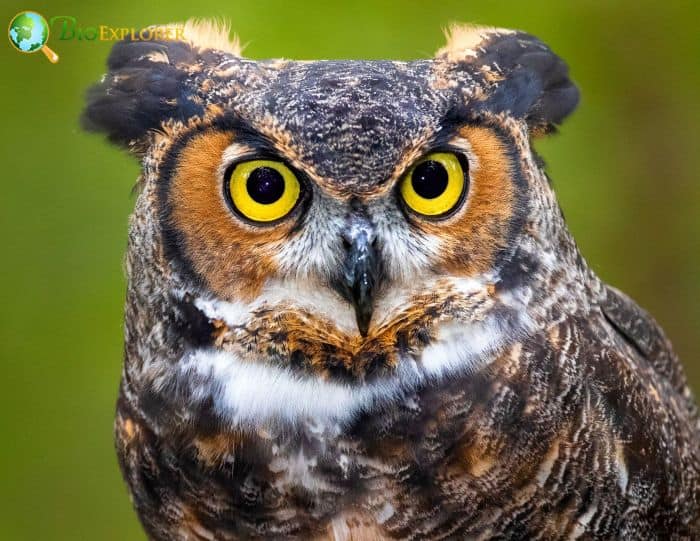
There are several animals that predate Black-billed magpies including but not limited to[§]:
- Águila Real/Golden Eagle (Aquila chrysaetos)
- Aguililla de Swainson/Swainson’s Hawk (Buteo swainsoni)
- Aguililla Cola Roja/Red-tailed Hawk (Buteo jamaicensis)
- Great Horned Owl (Bubo virginianus)


